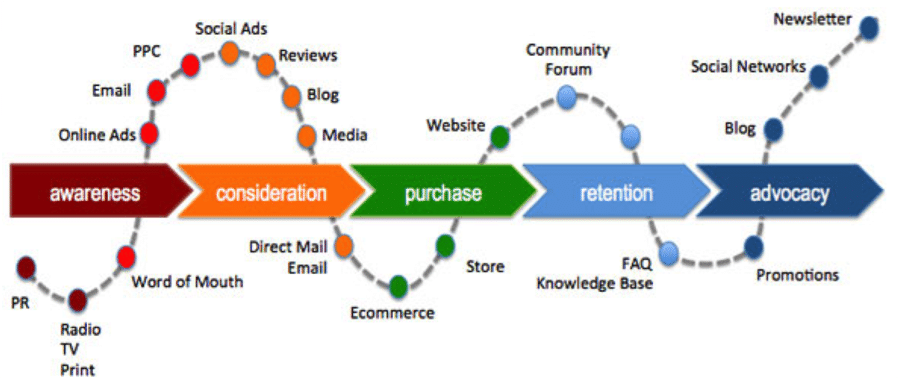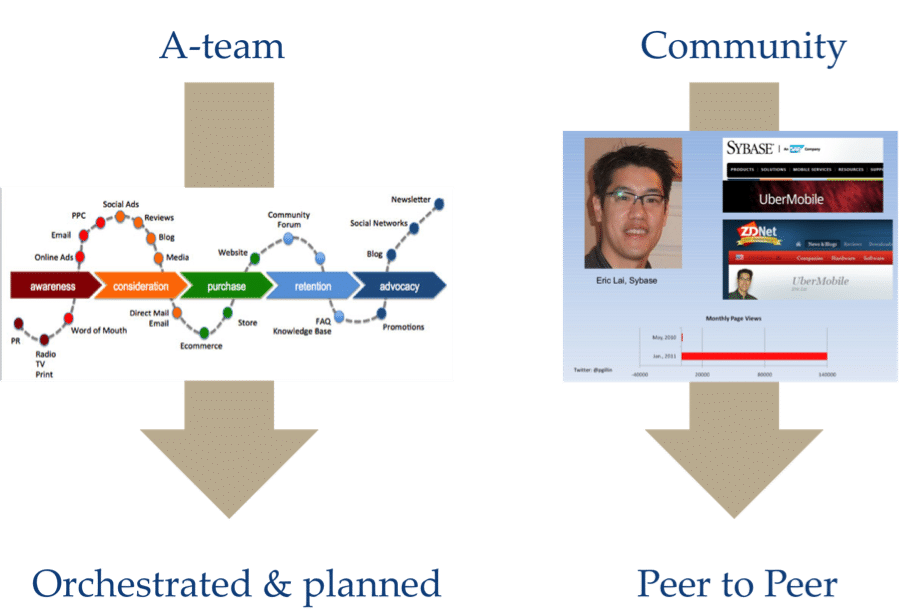
Successful organizations take on an efficient content marketing strategy as a centrepiece of their activities. It’s not an add-on. It’s strategic. Getting buy-in from the organization can be difficult, but doable. Getting people motivated to build that strategic content culture and content strategy is something else.
How do you get an organization to take on content as a strategic part of the business? How do you create a culture of content creation and education, internally and externally?
Here are 5 key tactics that help building a content culture, involving all internal stakeholders and your peers.
1. Find out what your colleagues care about
When people do their job well, they get praised. Or get a raise. Or get promoted.
That’s what drives people.
A great way to make content creation and content strategy a company wide activity is to embed it into what they care about.
- Service engineers care about solving a customers’ problem
- Project managers care about delivering a project on time, within budget, above customer expectations
- Training managers care about good feedback from trainees
- Customer support care about how they excelled in helping customers
- …
Find out what makes these people ‘tick’, and let them write it down. Let them know that you expect this from them. Help them in “airing” their personal success stories, insights and helpful stories. And if they do, praise them in public.
2. Assign specific tasks to key people
Once you convinced your CEO of the importance of content marketing, a content marketing strategy AND a content strategy, assign a number of specific tasks to a number of key people within your organization.
A key task is finding out what the content needs of buyers and customers are . To find them out, you’ll need people that can listen to these content needs, no matter where your customers are located in the buying cycle. I even prefer to talk about content along the customer life cycle as in the infographic below from Lee Odden, who speaks at the Content Marketing Conference 2014 where I host a workshop on integrated content marketing and the sales and marketing function.

That’s why assigning specific listening tasks to key people within the organization is also key to your content strategy.
You can read more about how you can organize this “listening” process in my blog post “Failproof Listening method for Laser-sharp Content Marketing“.
3. Get yourself a content strategy A(nswer)-team

The 2013 Edelman Trust Barometer (see below) shows that people in a certain position trust people that are in the same position as they are.
That’s why I believe everyone in the organization must know how to create content for customers. I call it a peer-to-peer content marketing strategy approach, based on a collaborative and educated culture of content.
I am also a strong believer that strategic content, on top of peer-to-peer content, needs to be orchestrated and planned. This is the type of content that makes buyers and customers evolve through the buying cycle.
This type of orchestrated content can be created by an A(nswer)-Team with following content strategy tasks:
- Setting up strategic “listening initiatives” that will positively impact your business
- Planning specific strategic content themes around which content can be created
- Assigning tasks to content listeners and content creators
- Safeguaring the planning and execution of strategic content initiatives and the overall content (marketing) strategy.
4. Don’t be over-ambitious: set expectations
The peer-to-peer content in your company will not be created if you do not set the expectations right.
You expect something from your teams. You expect their boss to expect it from them. Talk to them, talk to their boss, talk to the CEO.
- If people complain they don’t have the time, make sure they get the time.
- If people don’t want to liberate time, get other people to do this.
- If people don’t deliver on time, find out how you can help to speed up things.
But don’t take no for an answer. They are part of this journey. Everyone is. Get them committed, and make them part of the success.
5. Keep your key sources of power active
Some people within your organization have more “power” than others. Those that are convinced of the power of content will need to contribute. They set the example for others. Regularly expect your Key Sources of Power to contribute: a blog post, joining an A-team meeting, or a video interview.
Do you think this will work in your organization? Let me know how you tackle(d) the content strategy and production challenge or if you can use this approach!
Warm regards, Tom De Baere.

